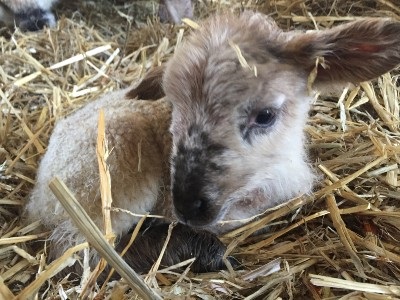Lambing Time Checklist
12 February 2021Successful lambing is much more than what goes on in the shed or the field at the time, planning, preparation and organisation go a long way to achieving good lamb survival. In the long term, feeding and genetics contribute the most, however as many now approach this important time of the year, attention should also start to focus on the logistics.
How much of the checklist do you have covered?
A calm environment for the ewe
Ewes like space, routine and familiarity; they don’t like mixing with unknown ewes or excessive dog, or human, disturbance. We want the ewe to give birth in her own time, without taking too long and we want the lambs to stand and suckle on its own. Excess stress affects these behaviours. An in-lamb ewe should have over 1.2 m² lying space – if she is competing for space; she is under stress.
Good hygiene procedures
Infection (predominantly watery mouth, joint ill or scours) can be a leading cause of lamb death. Sufficient bedding is worth it at this time of year. Ensure you have plenty disinfectant in stock and encourage staff to maintain good hygiene. Pens should have clean bedding between occupants, and either be disinfected or sprinkled with antibacterial powder. Keep on top of the main lambing pen with clean bedding added daily and consider antibacterial powder. It might be worth installing a hot water tank for hand washing and other uses in the shed, see more here.
Colostrum
A key prevention tool we have to fight infection – colostrum from the ewe herself. Point 1. above will help in aiding this transfer from ewe to lamb with minimal work required. For those with insufficient colostrum (e.g. triplet lambs, lean ewes), the best supplement is colostrum from other ewes in the flock. Be prepared to milk any singles with excess and store in 250 ml portions in ice cube bags or small bottles. Vacuum hand pumps are available to make this task easier. Colostrum can be kept in the fridge for up to a week and in the freezer for up to a year. Buy in good quality colostrum as a back-up, Johne’s free cow colostrum is also high value. More on colostrum here.
Iodine
Diligent use of iodine will reduce likelihood of joint ill. Apply liquid iodine over the whole navel as soon as possible after lambing. When checking the lambs later on, staff should check the navel, if not dried out, they should reapply Iodine. Some reapply after half an hour as part of their routine.
Other essentials
Get plenty of supplies in advance: disposable gloves, prolapse harnesses, over trousers, lubricant, lambing aids, thermometer, heat lamb, heat lamb bulbs, stomach tubes, syringes and needles, rubber rings, marker spray, management tags for ewes and lambs…the list goes on.
Shelter
So far, this year, the weather prospects are not good. Check shelter in your lambing/turnout fields. It may be worth stocking up on lambing jackets.
Poppy Frater, poppy.frater@sac.co.uk
Sign up to the FAS newsletter
Receive updates on news, events and publications from Scotland’s Farm Advisory Service

